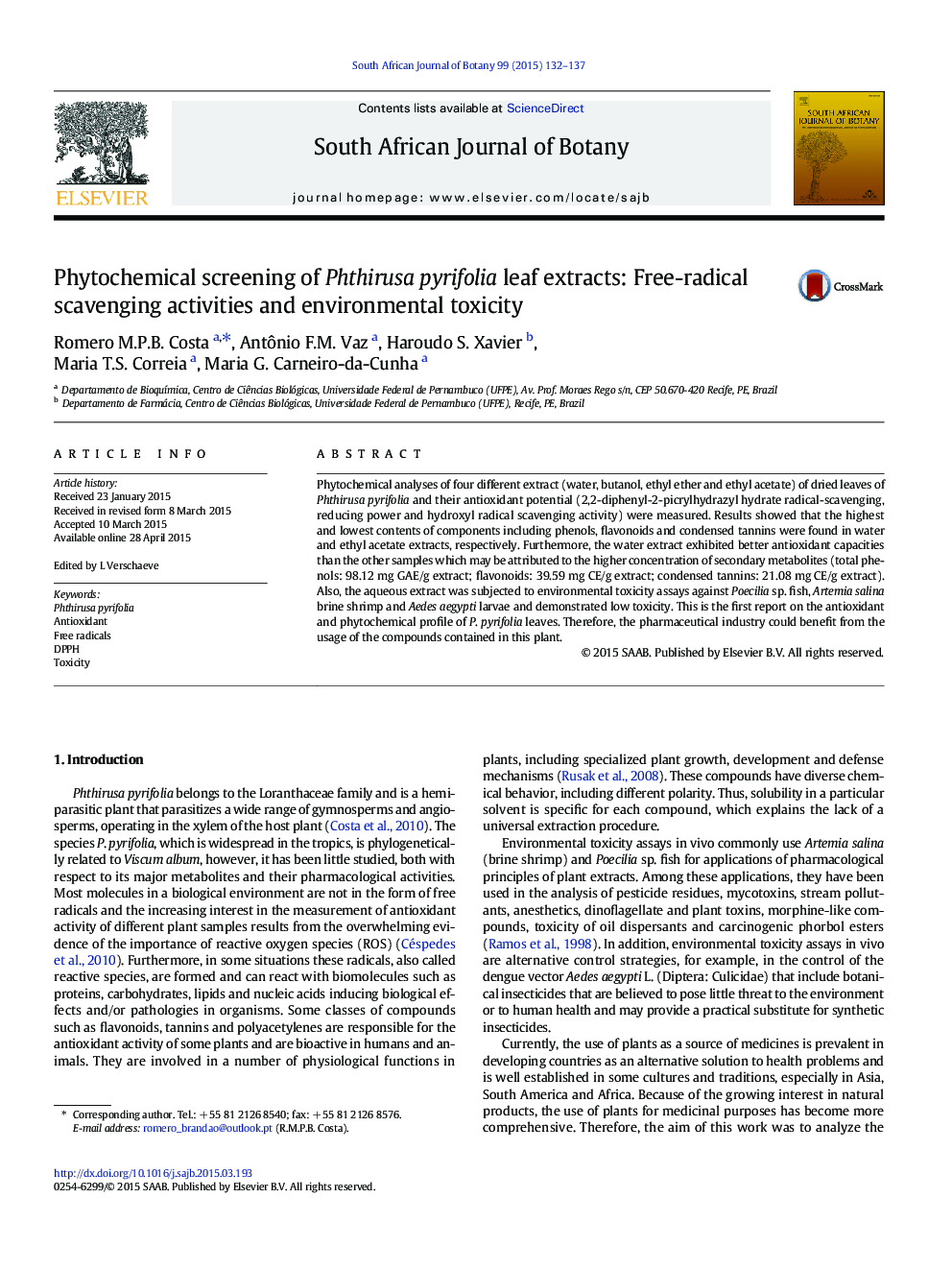| Article ID | Journal | Published Year | Pages | File Type |
|---|---|---|---|---|
| 4520440 | South African Journal of Botany | 2015 | 6 Pages |
•The aqueous extract showed no environmental toxicity.•Flavonoids have gained great interest as potential therapeutic agents.•The study showed the aqueous extract to be the most effective scavenger of reactive oxygen species.
Phytochemical analyses of four different extract (water, butanol, ethyl ether and ethyl acetate) of dried leaves of Phthirusa pyrifolia and their antioxidant potential (2,2-diphenyl-2-picrylhydrazyl hydrate radical-scavenging, reducing power and hydroxyl radical scavenging activity) were measured. Results showed that the highest and lowest contents of components including phenols, flavonoids and condensed tannins were found in water and ethyl acetate extracts, respectively. Furthermore, the water extract exhibited better antioxidant capacities than the other samples which may be attributed to the higher concentration of secondary metabolites (total phenols: 98.12 mg GAE/g extract; flavonoids: 39.59 mg CE/g extract; condensed tannins: 21.08 mg CE/g extract). Also, the aqueous extract was subjected to environmental toxicity assays against Poecilia sp. fish, Artemia salina brine shrimp and Aedes aegypti larvae and demonstrated low toxicity. This is the first report on the antioxidant and phytochemical profile of P. pyrifolia leaves. Therefore, the pharmaceutical industry could benefit from the usage of the compounds contained in this plant.
